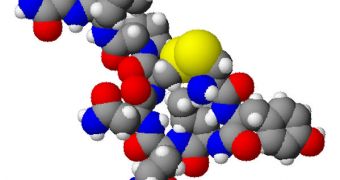For many years, neuroscientists have known that the hormone oxytocin plays an important part in fostering social bonds, such as the ones between mother and their children. This is why the chemical was dubbed “the love hormone.” But new investigations now appear to suggest that the name may have been given out prematurely. In a series of experiments, scientists proved that the hormone also underlies a series of not-so-loving-acts, such as for example attacking someone preemptively in order to protect someone you care about.
The new data is inconclusive with previous models, as it shows oxytocin promotes defensive aggression. This takes place only when an individual feels like his or her group is being threatened from the outside. When this happens, they jump forward and attack, and this behavior is promoted by elevated oxytocin concentrations. This is a new role to be affixed to the hormone, in addition to boosting social bonding, and promoting cooperation, LiveScience reports.
“Our study shows that oxytocin not only plays a role in modulating cooperation and benevolence, but also in driving aggression,” explains University of Amsterdam in the Netherlands social psychologist Carsten De Dreu. For the new experiments, “We were interested in seeing where oxytocin's 'niceness' breaks down,” he adds. Speaking about the results obtained when elevated doses of oxytocin were given to soldiers, De Freu says, “Giving soldiers oxytocin might make them more cooperative towards their comrades, even willing to self-sacrifice. But it should [also] make them more likely to launch a preemptive strike against the competing army, with conflict-escalation being the most likely consequence.”
The new investigation has significant long-term implications for a variety of therapies currently in use against various undesired behaviors, which involve the use of the hormone. “The most important practical implication is that we should stop treating oxytocin as a panacea for distrust and conflict,” the expert says. Details of the new investigation appear in the June 10 issue of the esteemed journal Science.

 14 DAY TRIAL //
14 DAY TRIAL //